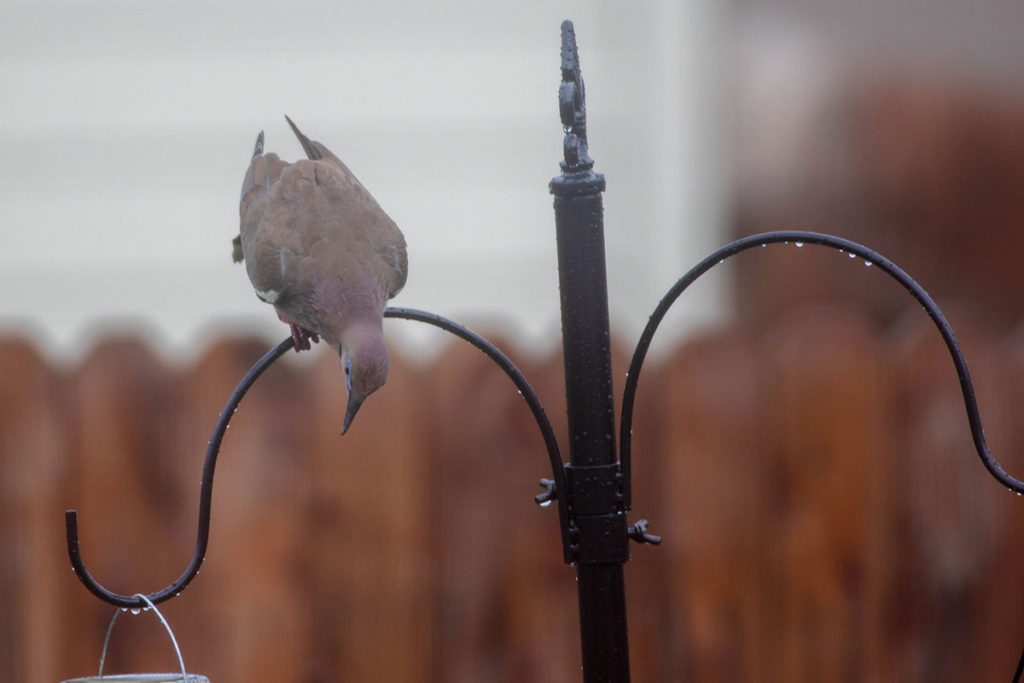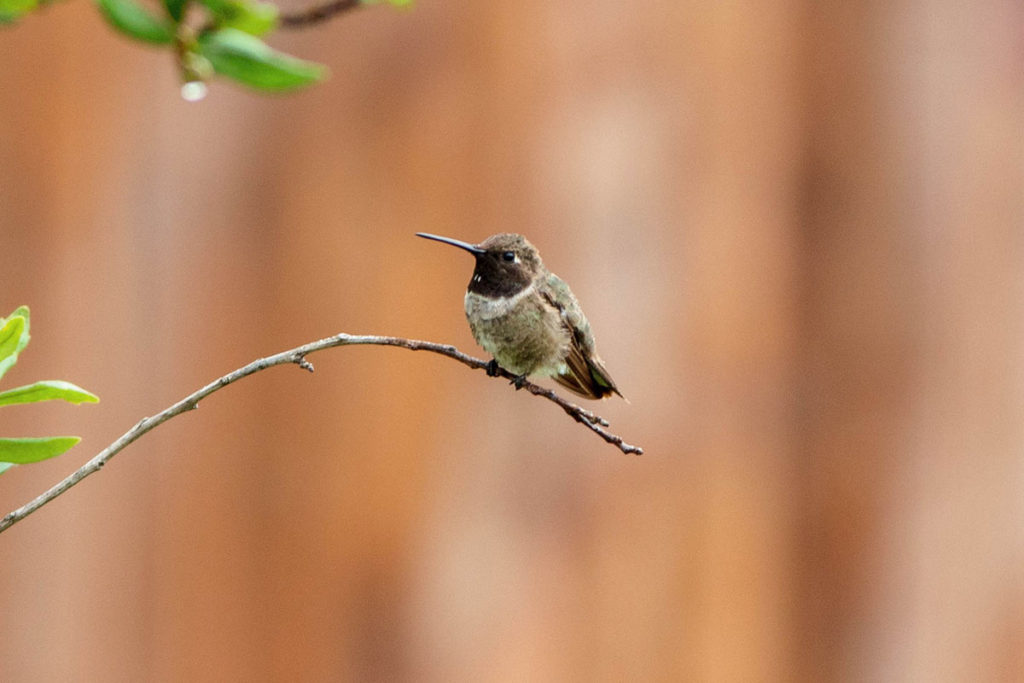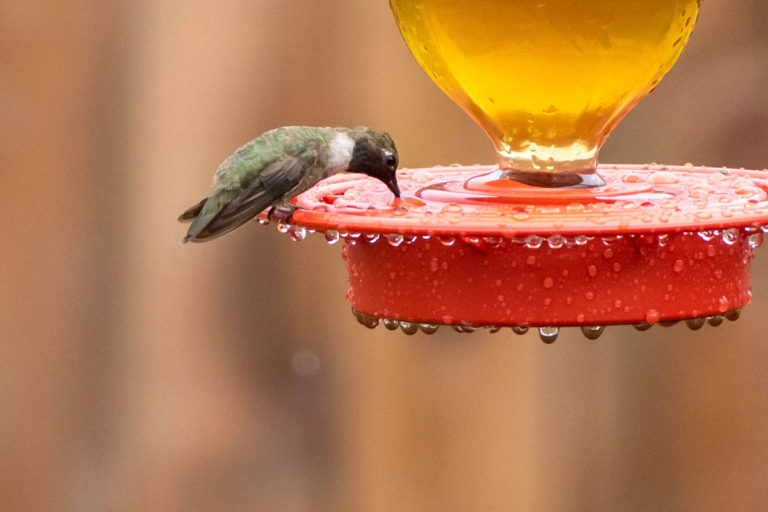Attracting a diversity of birds to my backyard has been a long-term goal of mine. So far, the only thing I’ve done is nail a birdfeeder made for a window to the fence. Initially, when I added black oil sunflower seeds, it attracted hoards of house finches. My next seed mix contained more millet than sunflower seeds so it brought the attention of mostly House Sparrows and White-winged Doves.
Yesterday I decided to go to a store I had my eye on for a while – Wild Birds Unlimited. The sales people were super helpful and I took home a hummingbird feeder and a suet feeder. I hung them on a “shepherd’s pole” next to one of our immature trees and hoped for the best.
The first evening it was out it went ignored. By 10 AM the next morning, the first White-wing Dove dared to land on the very top. It curiously looked down at the food below, wondering if it wanted to make the jump.

SUCCESS!

Arrival of the Black-chinned Hummingbirds
Doubters doubted, but I had confidence this sugar water-filled vessel would attract the hummers. Well, they didn’t let me down. Not long after the first dove appeared, the first hummingbird arrived. This Black-chinned Hummingbird flew up to inspect the feeder and decided to perch and have a sip.

The hummingbirds favored perching on a tiny twig on the tree next to the feeder. The most I saw at once was two.

The feeders are being transitioned to a mix that doesn’t contain millet to hopefully avoid more sparrows.
A new beginning
As I watched the birds that visited the yard very closely, I noticed a Mockingbird that would always land next to the tree and then hop inside the canopy. Upon closer inspection, I found she built a nest in the middle of the tree.
I’m using eBird to keep track of all of the birds that visit the yard each day. It’s a great way to keep track of seasonal changes in species and rare visitors that may pop up.
